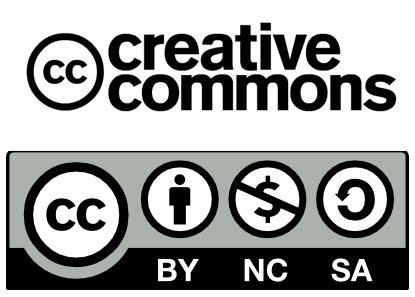Cate Russell-Cole's Blog, page 15
March 22, 2014
Controlling How Much of YOU Appears in Your Fiction
 As you write, you write out of your own experiences, no matter what the genre. It is a cliché but parts of you are always going to bleed through your keyboard to the reader. Your life is teaching you plot, characterization, behaviour traits and all the essentials needed to build a fully-formed, believable work of fiction… and that is good. However, you may not want your novel to be a kiss and tell where your subconscious has dobbed you in, through character personality traits, conflicts and experiences.
As you write, you write out of your own experiences, no matter what the genre. It is a cliché but parts of you are always going to bleed through your keyboard to the reader. Your life is teaching you plot, characterization, behaviour traits and all the essentials needed to build a fully-formed, believable work of fiction… and that is good. However, you may not want your novel to be a kiss and tell where your subconscious has dobbed you in, through character personality traits, conflicts and experiences.
Consciousness is the key to control. If you have journaled about your feelings and experiences in life, you will discover themes and events which will enable you to identify what is too much you. Plus you’re building a resource you can use to craft a better story. It could be likened to a mini self-service and/or character psychology course. It’s a lot cheaper than taking your novel to a therapist!
The act of physically writing out something which has happened helps to clarify events, giving you a new perspective on how and why things happened as they did. It’s a great plot formation tool that will both inspire your fiction… and keep you off the page! You are creating your own privacy control options, enabling you to effectively edit out the parts that are too close to the way you think or act.
However, don’t become paranoid about self-revelation:
“Let some of you come through. You’re obviously not writing a memoir here, but this book is still partly about you: the world you see, the way you think, the experiences you have with people. And trust me, readers are interested in who you are. So don’t be afraid to let bits and pieces of your personality and even life details seep into the text. It will breathe a lot of life into the book.” David Shenk
May I challenge you to get a journal and start to write about your life, your feelings and how you see the world. Look at how much may have slid through into your fictional work… and what comes out that you didn’t expect. It is a journey that will reward you in many ways.
For helpful information on journalling, go to Journal Chat with Dawn Herring, or Write for Life with Nathan Ohren.

This article / blog post is Copyright Cate Russell-Cole 2014. All rights are reserved Internationally. You may not reproduce it in any form, in part of whole, without Cate’s prior written permission. That includes usage in forms such as print, audio and digital imaging including pdf, jpg, png etc. A fee may be requested for re-using her work if it is for a commercial venture.
Link sharing and Pinterest pins are most welcome as long as Cate is the attributed Author.
Filed under: Character and Plot Construction, Writing Resources Tagged: author, becoming conscious, behaviour traits, books, challenge, character psychology, characterization, conflict, creativity, editing, fantasy, fiction, growth, ideas, inspiration, journal, life story, novel, plot, privacy, problem solving, self-awareness, success, writer, writing








March 20, 2014
What is Nagging for Book Sales, What is Marketing? The Difference…
 Trying to get the balance right in promoting blog posts and book sales gives me nightmares. I have looked at what Twitter recommends and what the social media marketing people recommend and there is a notable discrepancy. It seems Twitter wants to keep spam and server overload to a minimum, whereas the marketers understand the need to stand out from the crowd. Here is the balanced middle ground:
Trying to get the balance right in promoting blog posts and book sales gives me nightmares. I have looked at what Twitter recommends and what the social media marketing people recommend and there is a notable discrepancy. It seems Twitter wants to keep spam and server overload to a minimum, whereas the marketers understand the need to stand out from the crowd. Here is the balanced middle ground:
1. Only Tweet 7-20 times a day: no more or fingers will itch over that Unfollow button. All Twitter makes an interesting point about over-tweeting. Which proves that tweet nagging will knock you out of the game:
“TrackSocial took a look at the tweets from top brands to determine whether brands who tweeted more saw more retweets. And the findings are interesting… we begin to see a “sweet spot…” When they tweet 4 to 5 times per day, brands see over 300% more retweets per tweet than when they tweet just once. But the percentage of retweets per tweet drops when brands tweet more than 5 times per day…”
2. Mix your content! I unfollow anyone who tweets the same promotion multiple times a day, every day of the week! Post relevant videos, images, interact with people, promote your blog posts with quick content quotes in them etc. Have a series of different tweets for different books that you rotate over weeks.

3. There are many different opinions on what time of day is the best time for Twitter. It depends on your time zone, type of followers… you will slowly get to know what works for you. If like me, you work Internationally, there is no easy answer.
4. Talk to people, be genuine and be a real face online: not just a hard core seller. Twitter recommends you cover behind the scenes information too, not just sales and marketing. Tell people a little about how you work, what you like etc. Don’t err on the side of putting your personal life out there too much, but be human, not just “buy my stuff!”
6. Be professional. If you are selling your work, Twitter is not a good place to list your writing battles and insecurities. You can appear completely incompetent!
7. Follow about 10 new people a day to build your presence without spamming. Never or rarely mass unfollow people who don’t follow you. That is identified by Twitter’s watchdogs as spam activity. New research also shows that paying for followers achieves nothing: as do using gimmicks which guarantee follow backs. They just add you to their numbers, they don’t “see you.”

Infographic Source:
http://info.reallyb2b.com/blog-hs/bid/332063/The-Seven-Deadly-Sins-of-Social-Media-INFOGRAPHIC
This blog post by Cate Russell-Cole is licensed under a Creative Commons Attribution-NonCommercial-ShareAlike 3.0 Unported License. You are free to share and adapt it.
Filed under: Author First Aid, Book Marketing Tagged: Amazon, author, blog, blog posts, blogging, book marketing, books, challenge, content, ebook, exposure, infographic, marketing, nagging, problem solving, promotion, publishing, social media, spam, Twitter, writer, writing








March 18, 2014
When You Feel Like Originality Has Passed You By…
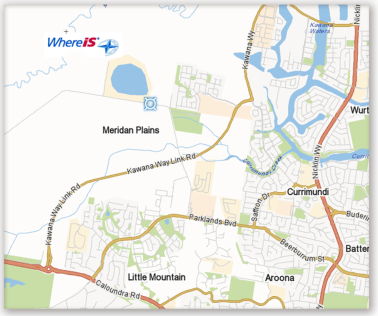 It was during the early 1990′s that I started to write “The Chronicles of Mirchar.” This was before the Internet, it had never been published and I felt my place and character names were pretty safe. I’d never seen them anywhere.
It was during the early 1990′s that I started to write “The Chronicles of Mirchar.” This was before the Internet, it had never been published and I felt my place and character names were pretty safe. I’d never seen them anywhere.
Then around 2003 or so, my husband and I were on holidays in a coastal area I had never been to. This area was fairly new and the suburb name: Meridan Plains. They had “stolen” my continent name! Even though my series was long since abandoned at the time… and had never seen the light of day outside my desk… I still felt the sting of losing my exclusive name. As I had (stupidly) destroyed my original manuscripts, I didn’t even have the satisfaction of storming into their local Council office to demand answers. “Where did you get this from, it was mine!” You know how it is when you get attached to your work. You take the oddest things rather personally…
I went online, checked all my old character names, had a little cry at my lack of originality and vowed to never, ever repeated the mistake. I would research all my names in case I had subconsciously “acquired” someone else’s idea. Then I was working on a name for a key character earlier this year and liked the name “Mirabelle.” I hadn’t read anything where it was used by my favourite authors and it looked safe to me. I did no further checking. It was just an old fashioned girl’s name. A few weeks later, I opened the cupboard. Months earlier we had changed light bulb types and voila!
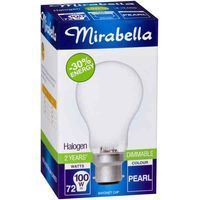
[Epic facepalm!] I named a favourite character after a light bulb. Please hold back on the “she must be a bright spark,” jokes! So much for learning that lesson. Though there is one thing I did learn from that: no matter what the genre, you don’t have to be perfect all the time… have fun and do what you want anyway. As one idea leads to another, then yet another, you never know what may come from it.

If you ever need it, this is how you name characters, places and construct languages in fantasy stories.
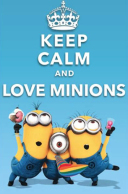
Character images property of Universal Studios.
1. Base them on known sounds and words so they strike a familiar chord with readers and don’t sound fake. Case in point, in the movie Despicable Me 2, the Minions call an apple “papple” and their banana language comes from a mix of many languages including Spanish, French, English etc. They will say “belo” instead of “hello.” You get the picture, it’s just close enough to sound right to our ears.
2. Building a fantasy language is a mammoth task! Try and stick to key phrases such as patriotic slogans, greetings and commonly used words, unless you head goes spinning off or you feel a strong need to sue someone, when you find out they used YOUR word!
3. Link your language into cultural elements: eg. In the Game of Thrones, in the Dothraki culture the word graddakh means “one who walks.” This is a status inference. You are worthy or unworthy as you are able to ride, or are too weak or forbidden to ride. It reflects your societal value. Using words like that gives them a great deal of power.
4. Document your language very well so you don’t contradict yourself, can build a glossary on your web site or into your books, and hey, if you get to the level of Sir Terry Pratchett, you can make a mint out of it. Or have people playing your equivalent of Klingon Boggle (video below for the Big Bang Theory fans).
5. Learn to be at peace with the fact that you will probably never get a totally original name or word and that’s OK. If it is recognisable as a possible native tongue, you aced it!
This work, created and Copyright Cate Russell-Cole 2014 is licensed under a Creative Commons Attribution-NonCommercial-NoDerivatives 4.0 International License.
Filed under: Writing Resources Tagged: author, blog, books, characterisation, creativity, Despicable Me, Dothraki culture, encouragement, failure, Fantasy Genre, Fantasy Languages, fiction, Game of Thrones, ideas, Indie publishing, Klingon Boggle, Language, Minions, novel, problem solving, publishing, support, the Big Bang Theory, writer, writing








March 16, 2014
Lessons Learnt by a Slightly Lost, Irish, Novel Researcher
 Last week on Triberr I read another writer’s post about seven crazy things she’d done in the name of novel research. Some were so risky, I am amazed she didn’t get arrested! It made me feel somewhat better about myself. As today is St Patrick’s Day, it’s a good time to share the lessons I am learning in my own novel research.
Last week on Triberr I read another writer’s post about seven crazy things she’d done in the name of novel research. Some were so risky, I am amazed she didn’t get arrested! It made me feel somewhat better about myself. As today is St Patrick’s Day, it’s a good time to share the lessons I am learning in my own novel research.
Quick Background: I am resurrecting and updating my old “Chronicles of Mirchar” series with a Celtic identity. It is set within a solar system of seven related planets; features warriors who are several thousand years old who still work with daggers, swords and warhorses… and the whole process of putting it together between migraines has been an epic learning curve.

The Lessons:
1. If you want to write descriptions well and understand a little more about your character’s discomforts, challenges and joys, it helps to actually own or be familiar with objects they use. For example, horse tack, daggers, swords, saddles: all the cool stuff! I went and bought a bitless bridal that hangs over my desk. Being able to handle the leather, see how non-slip reigns are constructed (and how much they would hurt your hands, gloves or not, after a few hours) is invaluable. I can’t ride for medical reasons, I had to find out somehow. Don’t let “you can’t,” get in the way!
2. If you are dealing with tricky subjects like weapons, which are frowned on in this part of the world unless you own a farm, check with Customs import rules, before you get up the sales hopes of an awesome bladesmith and fall in love with the dagger you have to have. (Sorry Jeff, I can’t get anything remotely that good here.) They don’t like untreated leather products and all kinds of things, so if using International mail, check before you get your heart broken.
3. When you see a HUGE sign that says, “Pattons Big Gun” and it is in a semi-rural area… before you drive the 14 miles back to visit the gun shop, (hoping they will have a dagger or some blade advice,) C.H.E.C.K. Google to find out what that business really does.
Here is what I saw:

If I had looked at the full signage and not the gun, I would have discovered it was a butcher. Plus… the one I went to had just gone out of business and their shop was being refitted for someone else. Epic facepalm! We couldn’t even buy dinner for our trouble.

4. Horses drool. Can someone please keep reminding me of that one? I will need that reminder when I go to the local Riding School to bombard them with equine behaviour questions. Knowing my luck, I am expecting a horse to eat my question list.  Just after I’ve written down the answers too…
Just after I’ve written down the answers too…
5. Don’t be afraid of criticism, stupid questions, or of taking pride in your work. Yes, I own a mane comb, hoof pick and bridle (they help me remember how big those animals are. I am a city dweller, I need help with proportions.) They sit in a public spot in my house where people are in and out… and we are just waiting for someone to ask if the bridle hanging off the curtain rail is actually something that would feature in a More Cowbell post. (Love your work Jenny!) No, it’s not… but it does remind me of some of the awful back braces I had to wear as a kid.

So want one!!!!!!!!!!!!!
I have found most people I have talked to (non-writers) think it’s great I am writing, doing something new despite my health and my horse-loving friends are looking at me with new light in their eyes. I have learnt to talk to my husband in a calm, confident voice, when visiting the local Saddlery. “That hoof pick is for Charlotte.” (Actually, it is, as I need to learn about what she needs. Charlotte is a 16 hands, Thoroughbred, bay coloured, brood mare; bred to Turbot, latest foal is Danae; no bit required due to horse-rider spiritual connection – I have totally got this!) I can now do things like that without feeling like an idiot and when asked by saddlery staff why no bit, I have an answer.
I have lifted saddles to test the strain they put on riders backs when saddling a horse; showed disgust at the time-saving el cheapo options for horses (no class and you don’t bond with your animal as much) and on staff request, could demonstrate a clear understanding of why I have to use saddle soap on my bridle. All in public, which normally I would cringe at… How: I have read, read, read and read. And thank God for Youtube how-to channels and a very patient husband, who still thinks I am a bit weird in public. I know she is not real… but how do you define real when you are working with characters and the horses will function as secondary characters.
If you work hard, you can hold your head up, have a great deal of fun (minus anything involving weapons) and learn things you never knew.
Now all I want is a miniature donkey as a pet. Why not? It’s research! (And a Clydesdale… ok, can I have a Scottish Claymore sword too? Plus a Celtic dagger, a complete horse grooming brush set, a Dublin Riding top, funky cowgirl boots…)
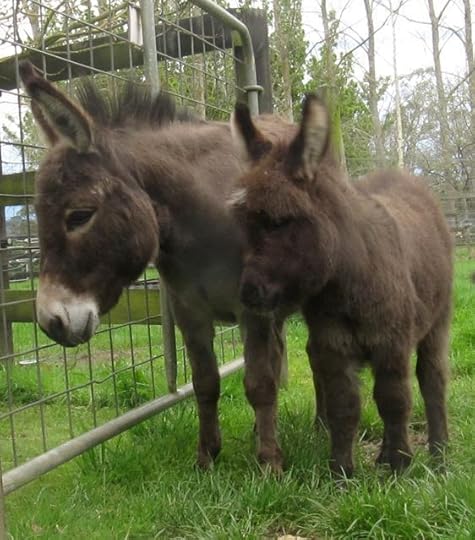
This article / blog post is Copyright Cate Russell-Cole 2014. All rights are reserved Internationally. You may not reproduce it in any form, in part of whole, without Cate’s prior written permission. That includes usage in forms such as print, audio and digital imaging including pdf, jpg, png etc. A fee may be requested for re-using her work if it is for a commercial venture.
Link sharing and Pinterest pins are most welcome as long as Cate is the attributed Author.
Reblogs are welcome as long as the post is attributed to me and no text is changed.
Filed under: "Writing Lessons from the Writing Life" Tagged: accuracy, author, books, Celt, challenge, characterisation, claymore, confidence, description, dirk, discovery, donkey, fantasy, fiction, Google, horse, ideas, inspiration, Mirchar, novel, plot, problem solving, research, St Patricks Day, writer, writing








March 14, 2014
Don’t “Write” Yourself Off: I Don’t Care How Old You Are!
One of my memoir classes was attended by an eighty year old lady who had little education; had never written a poem, story or anything else in her life – and discovered she could write with absolute perfection! What if she’d opted for the rocking chair and never tried? Obviously, she had been a life-long reader and that had taught her a great deal, but she never knew the talent was there… until she picked up a pen and started to write!
When this came out on Pinterest, I applauded. Take it to heart. It’s not too late until you’re *a week dead.

(*Survival Tip: be buried with a mobile phone in case it’s not really over. No, really, people do still opt for this.)

This blog post by Cate Russell-Cole is licensed under a Creative Commons Attribution-NonCommercial-ShareAlike 3.0 Unported License. You are free to share and adapt it.
Filed under: "Writing Lessons from the Writing Life" Tagged: ageing, blogging, creativity, Elizabeth Gilbert, encouragement, growth, inspiration, motivation, passion, support, writer, writing








March 12, 2014
The Power of Day Dreaming in Fiction #Writing

“Set Building”
I am a fantasy writer, who has hassles with description. Day dreaming and visualising is the only way I can cut through all the one sided fuzz that runs through my head. Otherwise my writing just sounds like a monologue! For me it’s a challenge as I am very analytical. I am more interested in the ‘why’ and ‘how’ of the story, than telling it.
I have a few tricks for getting over this: Pinterest, story boarding and “set building.” The last two set my ideas in concrete; Pinterest shows me things I can mull over, and all these techniques expand and improve my work. I find I rarely click on the links in Pinterest, it is the images or quotes which give me the ideas, so that is what I use the boards for.
I use cheap home design software for set building, to mock up the main areas where scenes take place. Without knowing where things are in relation to each other, I trip myself up. Details can be hard to visualise. Avoidance of bad reviews and harsh criticism sounds like a great goal to me… It’s amazing what details readers notice…

This is the perfect example of how Pinterest helps. This gorgeous Celtic motif Witches Dagger is made by Bladesmith Jeff Helmes. I wanted to buy it, but Aussie Customs had other ideas… Please click on the image to go to his Facebook page. If you are a fantasy, historical or crime writer, or just love shiny things, you will love him.
I have been building Pinterest boards which give writers the same inspiration that Pinterest gives me. So many images generate story ideas! As I am not well, I have cut my public boards down to four pivotal areas I relate to the most. (Sorry, the romance board just had me nauseous, it was the first to be divorced.)
If you are into fantasy, historical writing, Steampunk or Memoir, you will enjoy my themed boards. The Inspiration Board for All Writers has been there since the beginning and there are over 1100 pins on it, specifically on writing skills. (Though Pinterest is not letting me access all of them and I have no idea why.) Links are below the image. Have fun raiding it and please tell me, what works for you?
~ Fantasy Writer’s Dream Board
~ Memoir / Life Story / Autobiography

(If you have been following me and pins have gone missing, my sincere apologies. As they were mainly repins, there shouldn’t be a difference. I also had to cut back on many of the people I was following as it was just too much.)

This work, created and Copyright Cate Russell-Cole 2014 is licensed under a Creative Commons Attribution-NonCommercial-NoDerivatives 4.0 International License.
Filed under: Writing Resources Tagged: characterisation, creativity, day dreaming, details, fantasy, historical writing, ideas, imagination, inspiration, memoir, Pinterest, plot, resource, Steampunk, writer, writing








March 9, 2014
Think Outside Your Niche: Awesome Plot and Character Ideas
 In addition to gaining more markets and outlets for our writing, exploring the sites of other genres can also turn up gold dust. Last year Damien Trasler wrote me an excellent post on the success he has had with switching to screenwriting. It inspired me to think outside of the confines I have placed myself in as a writer. There is more out there I can do, I simply need an open mind.
In addition to gaining more markets and outlets for our writing, exploring the sites of other genres can also turn up gold dust. Last year Damien Trasler wrote me an excellent post on the success he has had with switching to screenwriting. It inspired me to think outside of the confines I have placed myself in as a writer. There is more out there I can do, I simply need an open mind.
When I was planning my blog posts for this year, I came across “The Script Lab” web site, and thanks to Damien, I stopped and had a good look around. It is exceptionally useful to all kinds of writers. I am encouraging you to go plunder it for your own needs.
 Some of their content includes:
Some of their content includes:
Character and scene questionnaires to help you build backstory, develop personality traits etc.
Naming characters effectively to convey their role or personality.
Key moments and plot points in story structure (quite a few of these and they are great.)
Comparing movie plot breakdowns which every writer can use.
Don’t miss their articles on the Triangle, the 100% Rule and the Three C’s!
Rules on Writing Heroes
Scene Types… and masses more!
Go raid it! http://thescriptlab.com/screenwriting-101/screenwriting

Facebook: https://www.facebook.com/TheScriptLab
Twitter: https://twitter.com/TheScriptLab
Their writing inspiration board on Pinterest: http://www.pinterest.com/thescriptlab/writing-inspiration/

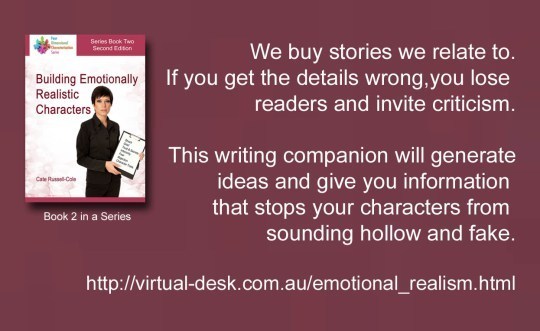
This blog post by Cate Russell-Cole is licensed under a Creative Commons Attribution-NonCommercial-ShareAlike 3.0 Unported License. You are free to share and adapt it.
Images in this post belong to The Script Lab and Open Clipart.com
Filed under: Writing Resources Tagged: characterisation, encouragement, goals, ideas, Indie Author, inspiration, marketing, novel, plot, problem solving, resource, success, support, writer, writing








7 Ways Authors Can Organize Their Pre-Writing
I hadn’t thought of half of these, but I need them for planning The Chronicles of Mirchar. Victoria, thanks! This is great advice.
 Originally posted on Creative Writing with the Crimson League:
Originally posted on Creative Writing with the Crimson League:

I’d bet all authors love that feeling of having a new, viable idea they can develop into a novel. I DEFINITELY do. It’s one of the most exciting experiences attached to the writing process, on a par with writing that final word of a first draft.
What writers do between having that brain wave (with the subsequent shouts of joy and air pumps of rejoicing) and actually starting to write depends on the author. We all write somewhat differently, with some us writing VERY differently than others.
As long as your process works for you, it’s a valid process and you shouldn’t feel the need to defend it to anyone or feel inferior to writers who do things the opposite way. I have always and will always say that.
Filed under: Writing Resources








March 6, 2014
When it all hits the fan… sometimes, you just have to duck!

Sharon sent me virtual flowers and made my day! Thanks Sharon. :-)
As a writer, you know, you don’t always get what you want. Some dreams just don’t come to fruition, whether it be a timing or financial issue; and projects sometimes hit the dust, simply because of circumstances.
I have been teaching memoir / life story writing for quite a few years and have been working together with Kathy Pooler, Sherrey Meyer and Sharon Lippincott to get a memoir writing challenge project off the ground. We’ve had some bumps and bruises along the way, but with my health in the current state it is in, and with all of us being crazy over-busy, it’s just not going to happen the way we had planned. As heart breaking as it has been to do it, last night I had the awful task of officially closing the project.
This blog will definitely continue as a resource blog for writers, posting twice a week. That I can handle. The Facebook Memoir page is now in the capable hands of Kathy and the other contributors. I am on Twitter only which is manageable.
I’m looking at it this way: it is time to rest, take a breath and consider doing something a little different. If I don’t work, I will go nuts; I just have to radically modify what I am doing.
So stay with me. Support an Author Month comes out in May. Posts are already scheduled until the end of June. This blog will continue, it will simply be less crazy to maintain. My Google Plus and Facebook accounts are gone (though the deletion of those did result in a happy dance…)
Thank you so very, very much to those of you who have supported the memoir project: Kathy Pooler, Sherrey Meyer and Sharon Lippincott, Chris Houser from Flash Memoirs, Madeline Sharples, Linda Joy Meyers from the National Association of Memoir Writers and Jenny Hansen from the Writers in the Storm blog. I am indebted and grateful to you all.
Cate
Filed under: What's On Tagged: The Memoir Project








When Great Book Release Preparation Pays Off

Click on the cover to get your copy of Blush in paperback or Amazon Kindle.
Last August, Author Shirley Showalter generously shared a post on Building Community as You Prepare Your Book Launch, as part of the Memoir Project. Since the release of her book “Blush,” it’s given me a great deal of joy to see her top Amazon sales in her book’s category and go from glory to glory. If you need inspiration on how to market your book, here is how she did it…
Congratulations Shirley!
During the holidays, when my tech-savvy adult children were visiting us, we had a blast with an event called a Cover Reveal. It brought my publisher, my audience, and me together for the first time in a formal way.
So, using the holiday theme, I’ve concocted a recipe for the event to share with you. Before you are ready for a cover reveal you have probably done years of work writing and polishing a manuscript, locating an agent or publisher or learning how to navigate the exciting, complex world of indie publishing, and developing a cover you are proud to share. You also need to have some base in social media. Even one base in FB, Blog, Twitter, Tumblr, Pinterest, etc. is enough.
Ingredients:
a group of people somewhere who care about you, your book, and/or the ideas it represents. Invite these people to your living room or other intimate setting.
some basic equipment. A webcam is essential. We used a Logitech 615 webcam connected to a laptop.
either previous knowledge of Google Hangouts on Air or a technical assistant/consultant
a model of someone else’s cover reveal
personalized paper invitations to the live event. Twitter, blog, Mailchimp, and FB “blast” to online fans and friends as the event time neared.
a clear idea of what you want both the live audience and the online audience to experience
food and a gift for live event participants
a script, including a short list of questions to be asked
Ten Steps:
1. Ask your audience questions.
I actually had a copy of the finished cover at Thanksgiving. I’m an exuberant type who likes to share news, and I almost put up the image right away. Instead, I slowed down a minute and asked my FB page “fans” this question: “Would you rather see the cover in an event or shared online?” I fully expected all my fans to clamor for “see it now”! But the first person to reply said “event” and others followed. That not only gave me energy to pursue what an event might look like, it also gave me permission to keep involving my prospective readers.
2. Find technical/marketing expertise.
The next step was to consult my son, Anthony, who set up my original blog, and daughter Kate, whom I’ve hired as my marketing consultant. Anthony suggested we use Google Hang Out on Air, which allows live audiences and remote ones to interact simultaneously and then automatically converts a livestream into a youtube video. Cool!
3. Select a model.
Kate found me this Taylor Swift cover reveal. Watch it to see how the pros do publicity. But don’t be intimidated. I didn’t even know who Taylor Swift was before Kate showed me this video. Yet the album itself climbed to the top of the charts in 2012. And you can see why.
This model included some elements our low-budget version could not compete with. Lighting, multiple cameras, live chat with online audience, etc. Yet the basic approach was easy to appropriate. And so we did. Shamelessly, down to the length of the video and the poster under the cloth.
4. Work with your publisher/designer/editor.
I am so fortunate that the small press that contracted with me, Herald Press, has been a great partner all the way from the book proposal to the editing and design processes. They provided a larger poster of the cover, sent out designed invitations to about a dozen local friends, and in general provided backup for the event. I did nothing for the cover design except provide some photos and respond to drafts. So I found it fascinating, as did the audience, to hear details about the design decisions from my editor, Amy Gingerich, who was able to connect from Ohio via Google Hang Out. The artist, Merrill Miller, was unable to join the event, but Amy represented his choices well.
5. Set up your video equipment in the space.
We placed a webcam a few feet away from where I would be sitting, removed wall coverings behind my seat, and made sure the poster would be visible always. We were not able to show the ten people in the room, with one permanent webcam, but the important stage was set. Here I need to thank my son-in-law Nik Stoltzfus, whose technical skill (he is partner and lead developer at Plumb Media) made it possible to connect with Amy, set up the camera, and roll it! Without Nik and Kate, believe me, the only party that day would have been in the living room!
6. Prepare some special touches for the live audience.
 The paper invitations, designed by the same artist who designed the cover, went out by mail about three weeks before the event. Since everyone in the room was taking holiday time to be there, I wanted to limit the amount of time they spent with me, make the event informative and fun, offer a little refreshment and social time to those who could stay a little while longer, and give them a little gift, a box of select Virginia peanuts. Within an hour of their arrival, our guests were headed home again, with good feelings.
The paper invitations, designed by the same artist who designed the cover, went out by mail about three weeks before the event. Since everyone in the room was taking holiday time to be there, I wanted to limit the amount of time they spent with me, make the event informative and fun, offer a little refreshment and social time to those who could stay a little while longer, and give them a little gift, a box of select Virginia peanuts. Within an hour of their arrival, our guests were headed home again, with good feelings.
7. Don’t just wing it!
As we got closer to the event, even though I was spending most of my time playing with grandson Owen and granddaughter Julia, and cooking, I made up a to-do list that Kate and I followed through-out the week. We did a little something each day to get us closer to the goal of a great event. I constructed a script, a set of three questions on a huge post-it note for the live audience to use as guides (off camera), and reviewed Amy Gingerich’s script with her a few hours before we went live. If Amy would not have been reachable by Google Hangout, I was prepared to do her part. Thank God that wasn’t necessary. But the lesson is to practice Plan A and be prepared for Plan B.
8. Have a clear goal in mind.
 Ideally, you begin with this step. Since I had no handy blog post like this one to follow, my goals evolved over time rather than drove the project from the beginning. Kate and I have been reading Michael Hyatt’s Platform: Get Noticed in a Noisy World
Ideally, you begin with this step. Since I had no handy blog post like this one to follow, my goals evolved over time rather than drove the project from the beginning. Kate and I have been reading Michael Hyatt’s Platform: Get Noticed in a Noisy World . We were struck by the definition of wooing the reader with Wow. Here the the ten elements we discussed as we did our planning:
. We were struck by the definition of wooing the reader with Wow. Here the the ten elements we discussed as we did our planning:
surprise
anticipation
resonance
transcendence
clarity
presence
universality
evangelism
longevity
privilege
Aiming for wow! We definitely had surprise and anticipation going for us. We think audiences in the living room and online were able to enjoy the wow of the event through most or all of these elements. Just feeling wow together is no small thing.
9. Find a way to archive the event and continue sharing.
The livestream immediately became a youtube. Here it is!
10. Learn from your mistakes
On the day of the event, I came down with a cold, which made it harder for me to convey warmth with my voice and may have slowed me down a little. Not much to do about that problem except to slog right through it. However, as Kate and I debriefed, she pointed out that I didn’t ask anyone to take any action. Previously, I had asked people to sign up for my list (and get both a free guide on How to Write a Memoir and short weekly writing prompts called Magical Memoir Moments). I could have done so again. Since I didn’t, now there’s a subscribe form.
Now, I’d love to know what other questions and comments you might have either about the cover, the reveal, the technology, or anything else! Who will start us off?

Copyright Shirley Showalter 2013. All Rights Reserved Internationally
Visit Shirley’s blog. Follow her on Twitter.
Filed under: Book Marketing Tagged: autobiography, book launch, how-to, life story, mailing list, memoir, promotion, publicity, publishing, Shirley Showalter, technology, video, writer, writing









